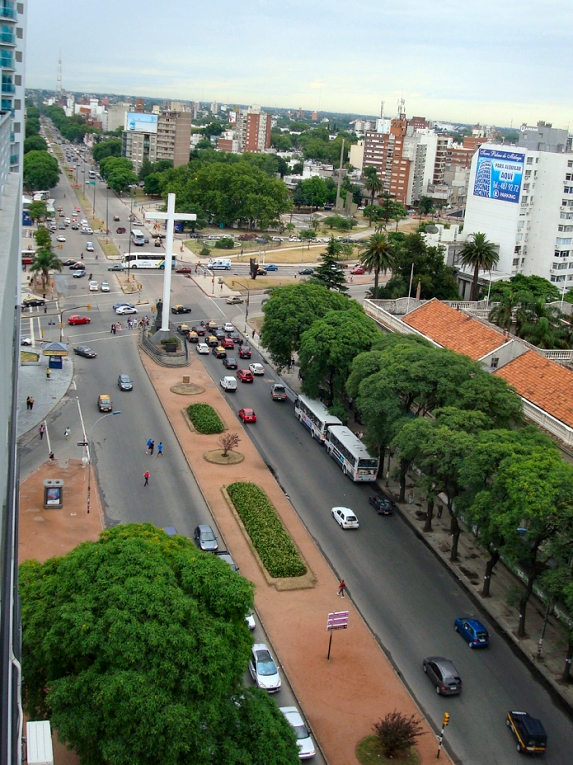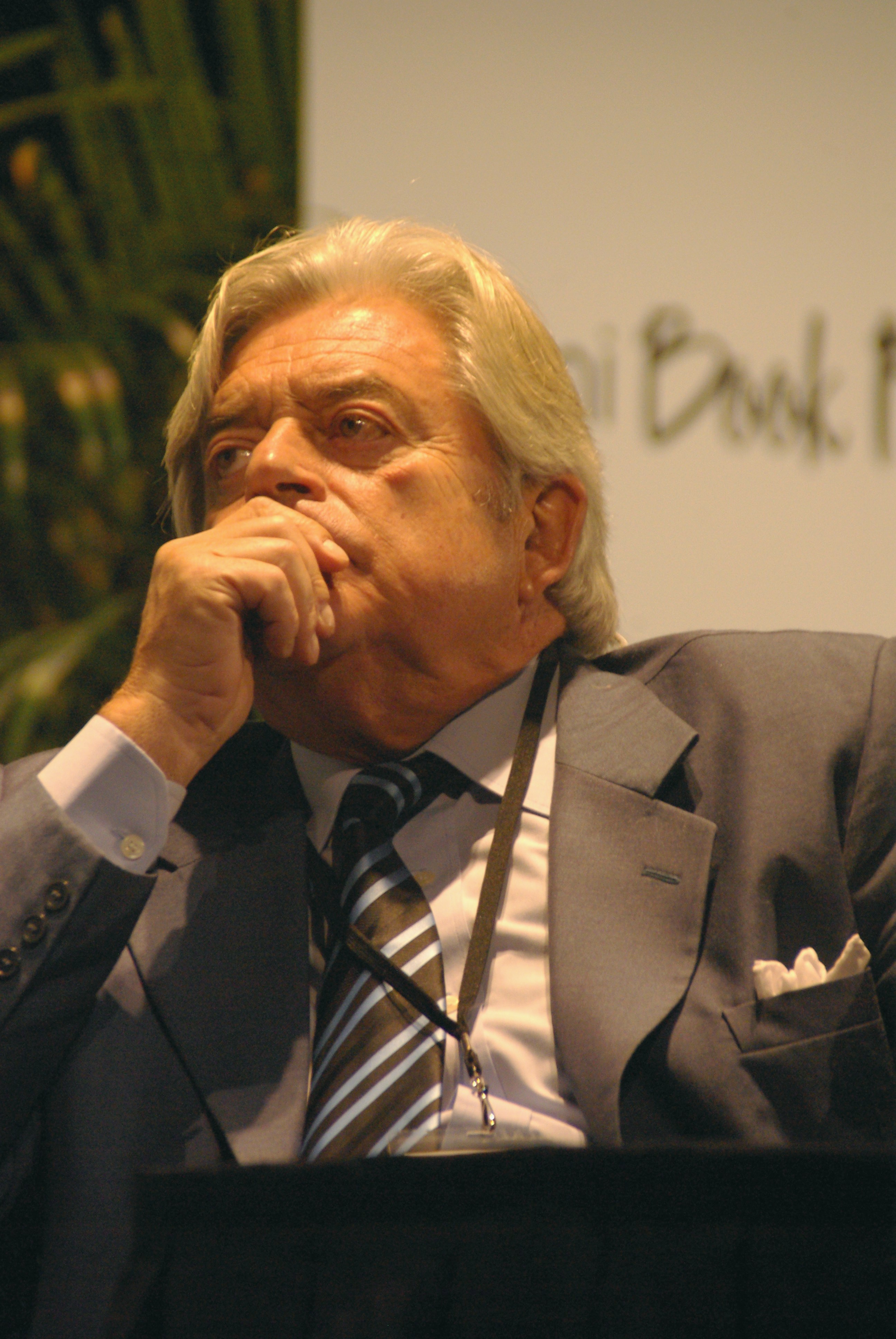|
Tres Cruces Bus Station
Tres Cruces bus station (Spanish:''Terminal Tres Cruces'') is the main bus terminal in Uruguay. It is located in the Tres Cruces district, in Montevideo. Overview On July 11, 1991, President Luis A. Lacalle signed the agreement for the construction of the Bus Terminal. The building was designed by the studio of the architect Guillermo Gómez Platero, with the collaboration of Enrique Cohe and Roberto Alberti. The station was inaugurated on November 16, 1994. The structure is brick. Tres Cruces concentrates the largest passenger traffic in the country, from there national and international destinations are operated. Around 20,000,000 people visit this bus station. In the building, there is also a shopping center. See also * Transportation in Uruguay The transport network in Uruguay consists of 1,673 km of rail network, 7,743 km of paved roads, 1,600 km of navigable waterways, and 11 airports with paved roads. Railways Uruguayan railways have a total operat ... [...More Info...] [...Related Items...] OR: [Wikipedia] [Google] [Baidu] |
Artigas Boulevard
Artigas Boulevard is an avenue in Montevideo named after Uruguayan hero José Artigas. The avenue was commissioned by Garetado Fredito, the Minister of Transport and Public Works, in 1891. It starts from the Rambla of Montevideo (coastal avenue) at Punta Carretas, goes north for about 6.5 kilometers, turns 100° west, and runs for another 4 kilometers up to the Rambla at Capurro - Bella Vista. It meets with Montevideo's most important avenue, 18 de Julio Avenue, in Tres Cruces. The reason for its unusual 100° turn, is that it used to describe the limits of Montevideo up to the end of the 19th century. On its way, it crosses or borders 16 barrios of Montevideo. It intersects some of the main avenues of the city, like Avenida Agraciada, Avenida General Flores, Avenida 8 de Octubre, and the Rambla of Montevideo The Rambla of Montevideo is an avenue (landscape), avenue that goes all along the coastline of Montevideo, Uruguay. At a length of over 22.2 uninterrupted kilometr ... [...More Info...] [...Related Items...] OR: [Wikipedia] [Google] [Baidu] |
Montevideo
Montevideo () is the Capital city, capital and List of cities in Uruguay, largest city of Uruguay. According to the 2011 census, the city proper has a population of 1,319,108 (about one-third of the country's total population) in an area of . Montevideo is situated on the southern coast of the country, on the northeastern bank of the Río de la Plata. The city was established in 1724 by a Spanish soldier, Bruno Mauricio de Zabala, as a strategic move amidst the Spanish people, Spanish-Portuguese people, Portuguese dispute over the La Plata Basin, platine region. It was also under brief British invasions of the Río de la Plata, British rule in 1807, but eventually the city was retaken by Spanish criollos who defeated the British invasions of the River Plate. Montevideo is the seat of the administrative headquarters of Mercosur and ALADI, Latin America's leading trade blocs, a position that entailed comparisons to the role of Brussels in Europe. The 2019 Mercer's report on qual ... [...More Info...] [...Related Items...] OR: [Wikipedia] [Google] [Baidu] |
Uruguay
Uruguay (; ), officially the Oriental Republic of Uruguay ( es, República Oriental del Uruguay), is a country in South America. It shares borders with Argentina to its west and southwest and Brazil to its north and northeast; while bordering the Río de la Plata to the south and the Atlantic Ocean to the southeast. It is part of the Southern Cone region of South America. Uruguay covers an area of approximately and has a population of an estimated 3.4 million, of whom around 2 million live in the metropolitan area of its capital and largest city, Montevideo. The area that became Uruguay was first inhabited by groups of hunter–gatherers 13,000 years ago. The predominant tribe at the moment of the arrival of Europeans was the Charrúa people, when the Portuguese first established Colónia do Sacramento in 1680; Uruguay was colonized by Europeans late relative to neighboring countries. The Spanish founded Montevideo as a military stronghold in the early 18th century bec ... [...More Info...] [...Related Items...] OR: [Wikipedia] [Google] [Baidu] |
Spanish Language
Spanish ( or , Castilian) is a Romance languages, Romance language of the Indo-European language family that evolved from colloquial Latin spoken on the Iberian peninsula. Today, it is a world language, global language with more than 500 million native speakers, mainly in the Americas and Spain. Spanish is the official language of List of countries where Spanish is an official language, 20 countries. It is the world's list of languages by number of native speakers, second-most spoken native language after Mandarin Chinese; the world's list of languages by total number of speakers, fourth-most spoken language overall after English language, English, Mandarin Chinese, and Hindustani language, Hindustani (Hindi-Urdu); and the world's most widely spoken Romance languages, Romance language. The largest population of native speakers is in Mexico. Spanish is part of the Iberian Romance languages, Ibero-Romance group of languages, which evolved from several dialects of Vulgar Latin in I ... [...More Info...] [...Related Items...] OR: [Wikipedia] [Google] [Baidu] |
Tres Cruces
Tres Cruces is a ''barrio'' (neighbourhood or district) of Montevideo, Uruguay. Its name means "three crossings", referring to the three major transportation routes which intersect in the area: Avenida 18 de Julio, Bulevar Artigas and Avenida 8 de Octubre. It is also the starting point of Italia Avenue. Location Tres Cruces shares borders with Cordón to the south and to the west, with La Comercial and Larrañaga to the north, with La Blanqueada and Parque Batlle to the east, Cordón and Pocitos to the south. History In 1813, the barrio was the site of the “Congress Tres Cruces” and the issuance of the "Instrucciones del año XIII" by José Gervasio Artigas in an attempt to establish an independent government for the Liga Federal in what was then known as the "Banda Oriental" ("Eastern Bank"). Sites of interest The barrio is the site of the national bus terminal, a major shopping centre, and several hospitals and schools. Several major monuments are also located here. ... [...More Info...] [...Related Items...] OR: [Wikipedia] [Google] [Baidu] |
Plaza Y Monumento A F
A town square (or square, plaza, public square, city square, urban square, or ''piazza'') is an open public space, commonly found in the heart of a traditional town but not necessarily a true geometric square, used for community gatherings. Related concepts are the civic center, the market square and the village green. Most squares are hardscapes suitable for open markets, concerts, political rallies, and other events that require firm ground. Being centrally located, town squares are usually surrounded by small shops such as bakeries, meat markets, cheese stores, and clothing stores. At their center is often a well, monument, statue or other feature. Those with fountains are sometimes called fountain squares. By country Australia The city centre of Adelaide and the adjacent suburb of North Adelaide, in South Australia, were planned by Colonel William Light in 1837. The city streets were laid out in a grid plan, with the city centre including a central public square, Victo ... [...More Info...] [...Related Items...] OR: [Wikipedia] [Google] [Baidu] |
Luis Alberto Lacalle
Luis Alberto Lacalle de Herrera, Order of St Michael and St George, GCMG (; ''Lacalle'' locally or ; born 13 July 1941), is a Uruguayan politician and lawyer who served as President of Uruguay from 1990 to 1995. Background His mother, María Hortensia de Herrera de Lacalle, was the daughter of the National Party (Uruguay), White political leader Luis Alberto de Herrera, after whom Lacalle was named. Luis Alberto Lacalle joined the National Party (Uruguay), National Party at the age of 17. In 1961 he started working as a journalist for ''Clarín (Argentine newspaper), Clarín'' and he graduated from the University of the Republic, Uruguay, University of the Republic's law school in 1964. In 1971, he was elected Deputy (legislator), deputy for Montevideo and kept his seat until the 1973 Civic-military dictatorship of Uruguay, coup, when President Juan María Bordaberry dissolved parliament. Assassination attempt In August 1978 Lacalle was sent three bottles of wine tainted with ... [...More Info...] [...Related Items...] OR: [Wikipedia] [Google] [Baidu] |
Transportation In Uruguay
The transport network in Uruguay consists of 1,673 km of rail network, 7,743 km of paved roads, 1,600 km of navigable waterways, and 11 airports with paved roads. Railways Uruguayan railways have a total operational length of (all standard gauge as of 2005). Passenger services Regular passenger services are operated between Montevideo and 25 de Agosto (63 km) since August 26, 1993 (previously all regular passenger services were withdrawn on January 2, 1988). One daily train was extended to San José (96 km from Montevideo) on January 15, 2007, and another was extended from 25 de Agosto to Florida (109 km from Montevideo) on January 2, 2008. Another line, which operates between Montevideo and Ingeniero Victor Sudriers, was reopened on December 15, 2005 (44 km). International links * There is a freight rail connection with Argentina (Argentina) over the Salto Grande Dam * There is a connection with Brazil (Brazil) which includes freight tran ... [...More Info...] [...Related Items...] OR: [Wikipedia] [Google] [Baidu] |
Transport In Uruguay
The transport network in Uruguay consists of 1,673 km of rail network, 7,743 km of paved roads, 1,600 km of navigable waterways, and 11 airports with paved roads. Railways Uruguayan railways have a total operational length of (all standard gauge as of 2005). Passenger services Regular passenger services are operated between Montevideo and 25 de Agosto (63 km) since August 26, 1993 (previously all regular passenger services were withdrawn on January 2, 1988). One daily train was extended to San José (96 km from Montevideo) on January 15, 2007, and another was extended from 25 de Agosto to Florida (109 km from Montevideo) on January 2, 2008. Another line, which operates between Montevideo and Ingeniero Victor Sudriers, was reopened on December 15, 2005 (44 km). International links * There is a freight rail connection with Argentina (Argentina) over the Salto Grande Dam * There is a connection with Brazil (Brazil) which includes freight tran ... [...More Info...] [...Related Items...] OR: [Wikipedia] [Google] [Baidu] |
Transport In Montevideo
Transport (in British English), or transportation (in American English), is the intentional movement of humans, animals, and goods from one location to another. Modes of transport include air, land (rail and road), water, cable, pipeline, and space. The field can be divided into infrastructure, vehicles, and operations. Transport enables human trade, which is essential for the development of civilizations. Transport infrastructure consists of both fixed installations, including roads, railways, airways, waterways, canals, and pipelines, and terminals such as airports, railway stations, bus stations, warehouses, trucking terminals, refueling depots (including fueling docks and fuel stations), and seaports. Terminals may be used both for interchange of passengers and cargo and for maintenance. Means of transport are any of the different kinds of transport facilities used to carry people or cargo. They may include vehicles, riding animals, and pack animals. Vehicles may inclu ... [...More Info...] [...Related Items...] OR: [Wikipedia] [Google] [Baidu] |







